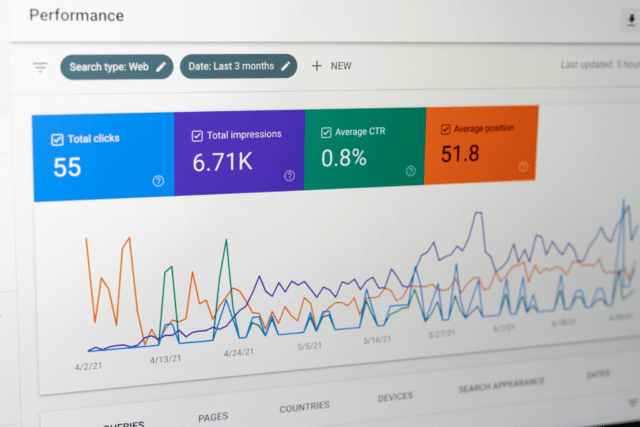Google Rankings dropped after Google's core update: What should you do?

The goal of Google Search's Core Updates is to enhance user experience and optimize its algorithms; nonetheless, many sites may face major changes in search ranks as a result. Any website owner must be aware of these adjustments as they have a direct impact on their capacity to preserve or improve their search engine rankings. Today, we'll explore the reasons for these rankings dropping, how to identify the changes, and practical actions you can take in this situation.
A Google Core Update refers to broad changes made to the overall ranking algorithms and systems that affect how websites are evaluated and ranked in search results. These updates aim to enhance the quality of search results by better assessing page content and its relevance to user queries. While Google continuously updates its algorithms, core updates are less frequent and more impactful, typically announced publicly by Google due to their significant effects on the search landscape.
The impact of Google Core Updates can be widespread, affecting websites and pages across all industries globally. After an update, it's common for website owners to notice shifts in their site's search rankings -- some may experience improvements, while others might see declines. The changes are dependent on how the updated algorithms reassess the existing content across the web, leading to a reshuffling of search rankings based on the new evaluation criteria.
Understanding these core updates is crucial for maintaining and improving the SEO strategy of a small business or a big one. By aligning with Google's focus on relevance, quality, and user experience, you can better position your site to withstand the impacts of these updates and potentially benefit from them. In the following sections, we'll explore how to assess the impact of a core update on your site and how to respond effectively to recover or improve your rankings.
The Top 4 Steps to Address Google’s Core Update
So, it happened, the update went into effect. What are your next steps? We will tell you everything in detail below.
Step 1: Assess the Impact of the Update on Your Site
After a Google Search’s Core Update, it’s vital to promptly assess how the changes have impacted your website. This assessment helps you understand the degree of the impact and guides your strategy for recovery or improvement. Here’s how to start evaluating the effects on your site:
a) Conduct Initial Checking
To begin assessing the impact of a Google Core Update on your website, start by logging into your Google Search Console (GSC) account and examining the Performance report. Here, you should look for significant fluctuations in clicks, impressions, average click-through rate (CTR), and average position. Notable changes that coincide with the timing of the Google update can serve as clear indicators of its impact on your site.
Next, turn to Google Analytics (GA) to review changes in organic traffic. Compare the volume of traffic before and after the update to identify any significant declines or improvements. Additionally, it's crucial to analyze user engagement metrics within GA, such as bounce rate and session duration, to determine if user behavior has shifted following the update. This comprehensive approach using both GSC and GA will provide a holistic view of how the update has affected your website.
b) Identify the Pattern of Ranking Drops
When identifying the pattern of Google rankings dropping overnight, it is crucial to determine whether the decline was truly sudden. Abrupt drops in rankings could indicate penalties or significant issues with your site’s content or technical SEO that need immediate attention.
Conversely, a gradual decline in rankings might suggest that your site is facing increased competition or is not fully aligned with Google’s recently updated ranking criteria. Understanding the nature of these changes is essential for developing an effective strategy to address them.
c) Analyze the Severity of Impact
- Business Goals and KPIs: Examine conversion rates and other key performance indicators (KPIs) to gauge the direct impact on your business. Based on this review, prioritize your recovery efforts, targeting business-critical pages and keywords that are fundamental to achieving your site's goals. This strategic focus ensures that resources are allocated efficiently to areas with the highest return on investment.
- Keyword Performance: Utilize Google Search Console to assess how specific keywords have been impacted. This analysis will help you to tailor your SEO strategy, focusing either on high-value keywords or on long-tail variations, depending on their individual impact and importance to your overall strategy.
- Page-Level Impact: Conduct a detailed analysis to identify which specific pages have lost rankings. Determine whether these changes are widespread on your site and are related to critical technical SEO issues or are limited to certain types of content. This information is crucial for pinpointing areas that need immediate attention and intervention.
Step 2: Diagnose the Cause of Ranking Drops
After assessing the impact of Google Search’s Core Update on your site, the next important step is to diagnose the root causes of the ranking drop. Each of these elements plays an important role in how your site is evaluated by updated algorithms, and understanding their impact can help guide your optimization efforts in the right direction. Here are the most important aspects to check:
Technical Factors
- Indexing Issues: Verify that all intended pages are being indexed by using tools like Google Search Console. Check the Coverage report to see if Google has excluded any pages and understand why.
- Site Speed: Utilize tools, such as Google PageSpeed Insights, to identify any speed issues that could be affecting user experience and rankings. Addressing slow loading times can significantly improve your site’s performance.
- Mobile Usability: With the increasing importance of mobile-first indexing, ensure your site is optimized for mobile users. Google’s Mobile-Friendly Test can help you detect any potential usability issues that might affect mobile rankings.

Content Factors
- Content Quality and Relevance: Conduct a thorough review of your content to ensure it meets the high standards expected by Google. Check for depth, accuracy, and utility in your articles or blog entries.
- Adherence to E-E-A-T Guidelines: Evaluate your content’s alignment with Google’s E-E-A-T (Experience, Expertise, Authoritativeness, Trustworthiness) principles. This involves ensuring that your content is written by experienced, credible authors, cited properly and provides authoritative information on topics relevant to your audience.
Link Profile Analysis
- Backlink Quality: Use tools like Ahrefs or Moz to analyze the quality of backlinks pointing to your site. Look for patterns that could be dragging your rankings down, such as links from low-quality or irrelevant sites.
- Identifying Harmful Links: Scrutinize your link profile for any unnatural or spammy links that could be subjecting your site to penalties. Consider disavowing harmful links through the Google Search Console to mitigate any negative effects.
Practical Steps to Recover Rankings
After diagnosing the causes of ranking drops due to a Google Core Update, it's time to focus on recovery. This section outlines practical steps you can take to regain your lost rankings and enhance your site’s overall performance. These steps include updating and optimizing content, improving site architecture and user experience, and enhancing your backlink profile.
1. Update and Optimize Content
Content is king in the realm of SEO, and its quality directly influences your site's rankings. Update outdated information, expand on topics where depth is lacking, and ensure that your content is comprehensive and authoritative. Consider the structure of your articles as well; breaking content into sections with headers can improve readability and SEO. Use relevant keywords naturally and ensure that all content provides real value to your audience, aligning with Google's E-E-A-T principles mentioned earlier.
2. Improve Site Architecture and User Experience
The structure of your site and the experience it offers are crucial for both search engines and users. To improve site architecture, ensure that your website is easy to navigate and that users can find what they need with minimal clicks.
This might involve restructuring your site's menu or improving the internal linking to ensure important pages receive more visibility. Speed is another critical aspect of user experience. Utilize tools like Google PageSpeed Insights to identify and rectify any issues that slow down your site. Additionally, ensure your site is mobile-friendly, as a significant portion of web traffic comes from mobile devices.
3. Enhance Backlink Profile
Backlinks remain a significant ranking factor, and having a strong backlink profile can help recover and improve your rankings. Focus on acquiring high-quality backlinks from reputable sites within your industry. This can be achieved through various methods, such as guest blogging, collaborations, and creating high-quality content, that naturally attracts backlinks. Remember, the quality of backlinks often outweighs quantity, so prioritize links from authoritative sources that add real value.
Step 3: Implement Changes and Monitor Progress
Once you've identified the causes of ranking drops following a Google Core Update, the next step is to implement changes that will help rectify these issues and improve your site's performance.
Proceed with developing a detailed action plan that outlines each step necessary to address the identified issues. This plan should include specific tasks, assigned responsibilities, deadlines, and expected outcomes. Prioritize actions based on their potential impact and the severity of issues to ensure efficient resource allocation.
After implementing changes, it's essential to continuously monitor your site's performance to gauge the effectiveness of your efforts. Use SEO tools and Google Search Console to track key metrics such as rankings, traffic, and user engagement. This ongoing monitoring allows you to quickly identify whether the changes are having the desired effect and to make further adjustments if necessary.
Step 4: Stay Updated and Adapt to Future Changes
Handling the ever-changing Google algorithm adjustments demands a continuing commitment to learning and adaptability. As search engine algorithms become more sophisticated, your SEO strategies must evolve correspondingly. This crucial step underscores the importance of staying informed about the latest changes and preparing your website to not only cope with future updates but to thrive amidst them.
Learn from Updates
Staying abreast of Google’s algorithm updates is essential. Regularly consult official Google channels, such as the Search Central Blog, Twitter updates, and webmaster forums to gain insights into the focus of each update and anticipate shifts in SEO best practices. Utilizing the knowledge gained from these updates, you can fine-tune your SEO strategies, analyzing patterns in the changes to predict future trends and adjust your tactics to align with Google's evolving standards and guidelines.
Prepare for Future Updates
To effectively prepare for future Google updates, it's vital to build a robust SEO strategy that emphasizes quality content, strong user engagement, and technical excellence. Concentrate on creating a flexible and adaptable strategy that can swiftly respond to changes in the search landscape.
Encourage a culture of continuous learning and experimentation within your team, regularly testing new SEO techniques and technologies to discover what delivers the best results for your site. By maintaining flexibility in your approach to search engine optimization, you ensure that your site remains competitive and compliant with Google’s standards, regardless of what future updates may bring.
Bottom Line
Navigating the aftermath of a Google Search’s Core Update requires a strategic and informed approach. By assessing the impact, diagnosing issues, and implementing targeted improvements, you can effectively recover your rankings and prepare for future changes. Stay proactive and adaptable, continuously optimizing your site to align with Google's evolving standards.
Image credit: Unsplash
